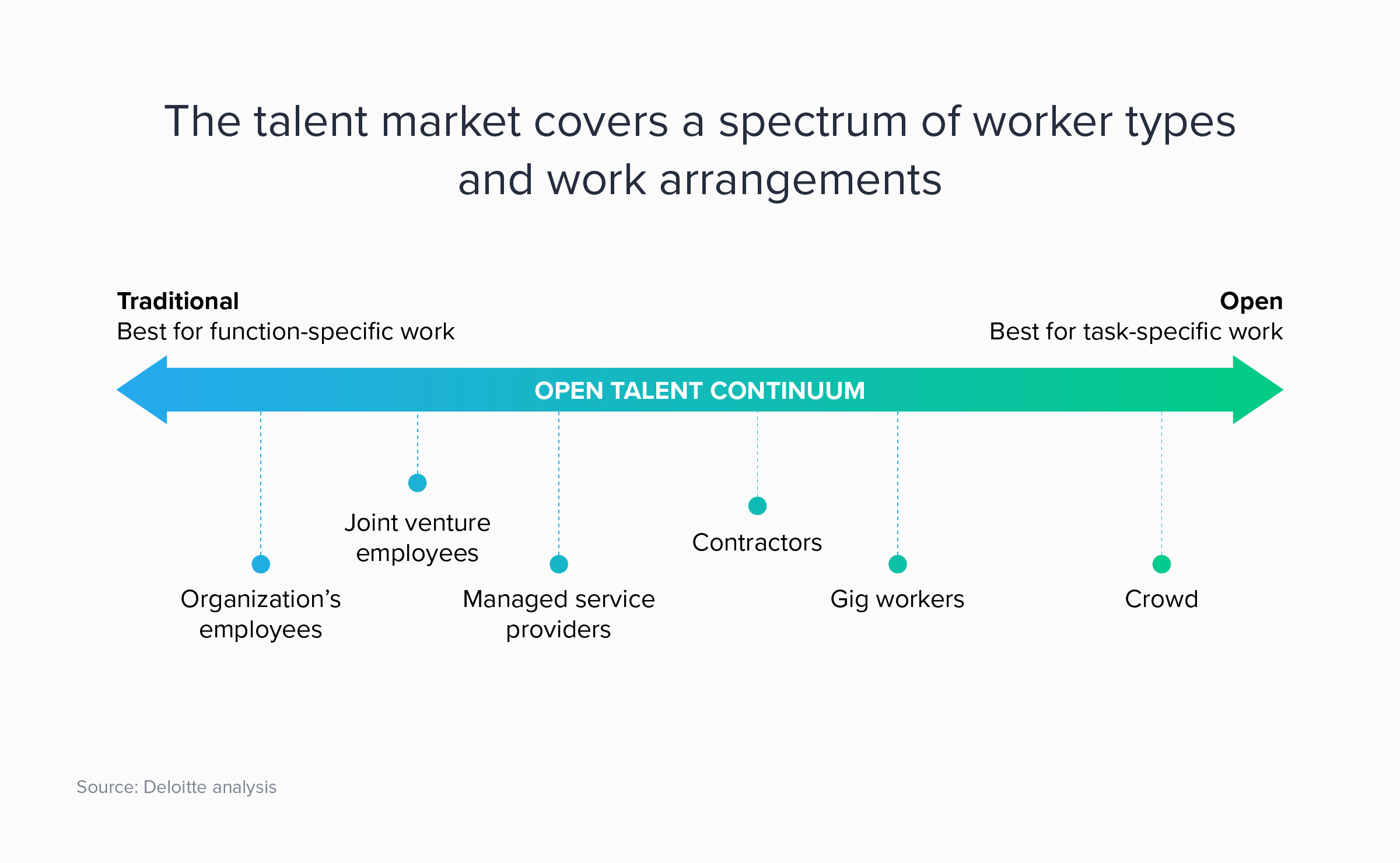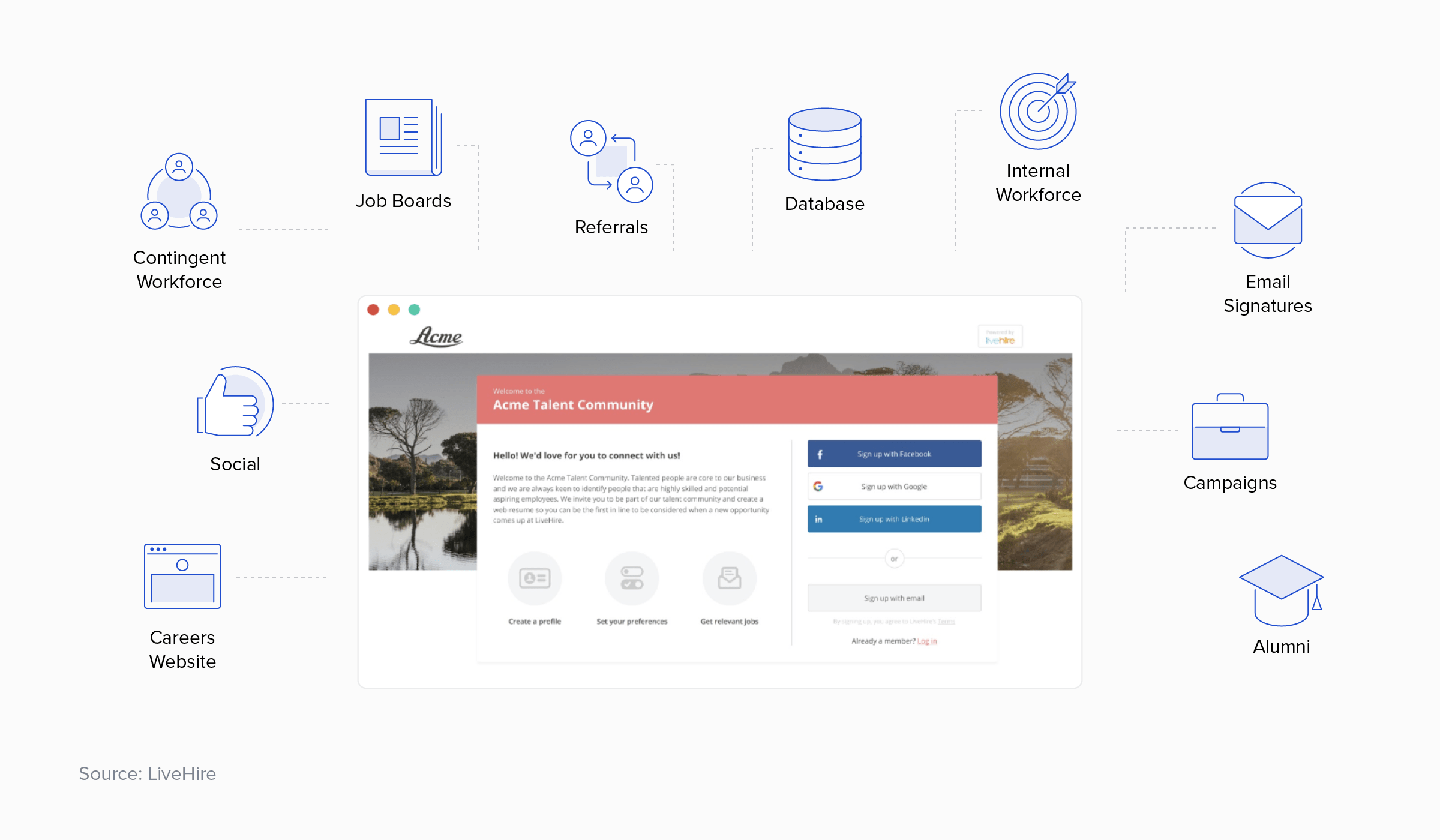Give It to Me Straight: How to Develop a Direct Sourcing Strategy
authors are vetted experts in their fields and write on topics in which they are extremely knowledgeable. All of our content is peer reviewed and validated by world-class professionals.

In 1997, Steven Hankin of McKinsey coined the phrase “the war for talent.” In 2014, Josh Bersin, founder of Bersin by Deloitte, declared, “The war for talent is over. The talent won.”
Whether or not the war is truly over, companies today are struggling to attract and hire the right talent. Skill gaps continue to widen, and two in five employees plan to leave their organization in the next 12 months. An incredible 97% of C-suite executives predict an increase in competition for talent during the same period, according to Mercer’s 2019 Global Talent Trends report. The traditional mantra of “attract and retain” is being replaced with “attract and continually attract,” the report said. Part of the reason for this shift is the increase in contingent labor: 79% of executives expect that contingent and freelance workers will substantially replace full-time employees, Mercer found.
In response, my clients are increasingly asking to explore direct sourcing strategies to expand their net for talent. Direct sourcing is a way for companies to curate their own talent pools (sometimes called talent communities) rather than go through a recruiting service. It's a strategy geared toward all candidates on the talent continuum.

Talent curation is at the heart of direct sourcing. To do this successfully, companies need to understand four key concepts:
- Leverage their brand to attract candidates.
- Build and maintain talent communities.
- Use the right technology.
- Include recruiter services to build relationships with these candidates.
According to LiveHire Founder Dr. Mike Haywood, “Progressive companies are rethinking traditional recruiting approaches. Talent curation is the next generation of sourcing and recruiting because candidate relationships – not just employee relationships – are being recognized as a valuable and competitive future asset, rather than transactional.”
In the last several years, 34% of US companies and 39% of EMEA companies have incorporated direct sourcing into their programs. However, Talon CEO Jonny Dunning believes this number is low. "Many organizations claim to have a solution for direct sourcing contingent talent,” he said, but in reality, it’s an ineffective manual process. While companies would like to have direct access to candidates, their programs fall apart at the execution stage.
It’s worth the extra effort, however. The Recruitment and Employment Confederation (the UK's recruiting industry body) estimates that recruiting a permanent hire can take more than 60 days. These delays can represent significant costs to businesses in lost productivity. The adoption of directly sourced contingent talent through private talent pools can effectively remove this productivity gap, said Dunning.
To truly scale a direct sourcing strategy, the solution needs to be robust. Organizations need to understand how these strategies work, why interest is exploding around the talent pool concept, and the roles that technology and internal adoption play in successful execution. Traditional sourcing and engagement strategies must evolve to focus on where and how candidates want to work.
Direct Sourcing Strategies
The four key components for a successful direct sourcing solution are:
1. Use your company brand to do the heavy lifting.
According to Mercer, “The future of talent sourcing is organizations using their own brand to attract and engage all types of candidates.” A well-known brand allows companies to leverage omnichannel sourcing to attract clients. Omnichannel sourcing uses a wide range of sourcing strategies to collect interested candidates (see image below). Once curated in the talent pool, the company can “keep them warm” until ready to hire. Compared to traditional sourcing, which is typically on a per-job basis, curating a private talent pool also has positive downstream effects in retention and productivity.
2. Create talent communities in the cloud.
Job seekers visit talent communities to learn about job openings at a specific company. For example, Caterpillar created five different talent communities based on skill: video editors, marketing writers, videographers, graphic designers, and photographers.

Talent communities offer content and resources to attract both active and passive job seekers. The communities then collect information about each site visitor, and their profiles are stored on a technology platform to deploy and redeploy for open jobs or contract positions. Secure and private, online talent communities allow companies to capture, curate, engage, and hire candidates faster.
3. Select – and adopt – the right technology.
Technology is at the heart of this sourcing model. It’s the engine behind talent communities. Companies who attempt to curate private talent pools manually will not scale their programs. "The key to making the right technology choice is engagement,” said Dunning. People have to use it. Direct sourcing platforms, including Talon and LiveHire, must be seamlessly integrated into existing technology and processes. "Trying to repurpose old technology to manage a talent pool of contingent workers is simply a bad idea,” said Dunning. “Engaging a flexible, remote, contingent workforce requires modern engagement techniques.”
4. Maintain a human touch.
While the right technology will allow a company to scale its direct sourcing program, people are involved at the services level. Recruiters and talent community managers must source, build, and manage these talent clouds. This part is critical, particularly because, when beginning a direct sourcing program, most companies don’t have a ready (or responsive) database of 20,000 eager candidates. "Intelligent human decisions and relationship building can leverage smart automation to form a key part of the proposition," said Dunning.

Getting Started
There are several paths to enabling a direct sourcing program:
- Integrate into an existing contingent workforce program—either a managed service provider (MSP) or a vendor management system.
- Work with your staffing providers to add this strategy to their solution offerings.
- Set up a program on your own.
Setting up a direct sourcing strategy needs careful consideration. It requires an organization to integrate multiple acquisition channels and existing HR and procurement technology. “Typically, the process begins with a plan to integrate the direct sourcing technology and then moves through implementation and into testing and roll-out,” said Dunning.
Good direct sourcing technology providers should have blueprints, project plans, and training capabilities, said Haywood. The technology itself can be typically set up in four weeks.
Leverage the experience, knowledge, and insights of your technology provider to shape the program. Don’t go it alone. Consider that these providers have done this hundreds of times and have deep expertise. Your technology provider will have a detailed implementation guide with these basic phases:
- Pre-implementation
- Discovery and planning
- Building and configuring your talent cloud
- Integrations
- Launch
Traditional staffing providers may see direct sourcing as a threat because the value of this solution is reduced costs. Direct sourcing margins are typically 20-25%, far lower than typical staffing agency margins (35-60%). However, direct sourcing is not in competition with staffing agencies. “Private talent clouds allow for greater transparency while providing greater utilization of previously submitted talent,” said Haywood.
Direct sourcing programs present MSPs with a significant opportunity to offer services, said Dunning. Companies need a blend of recruitment marketing to frontload the pipeline, recruiters to keep the pipeline fresh, and talent community managers to manage the candidates and create relationships. This service model is very different from the requisition coordinator roles in a typical MSP.
This team will also need to maintain accurate job descriptions and key performance indicators (KPIs) to ensure:
- Reduced time to hire
- Improved candidate experience and response times
- Improved recruiter efficiency
- Higher-quality hires
- Higher retention
- Employment brand differentiation
- Better candidate engagement
As the way and mix of how organizations engage talent—whether freelance, permanent, or on-demand—continues to shift rapidly, traditional sourcing approaches are often lacking. These approaches tend to be run by separate parts of the organization and lack unified, transparent data. Traditional methods are also inefficient, incurring more time and cost than necessary, said Haywood. Instead, “the relationship, power, and experience of the interaction between the candidate and the company needs to move to the forefront.” Direct sourcing is one way to head in the right direction and will put companies ahead of the game in their human capital strategy.
